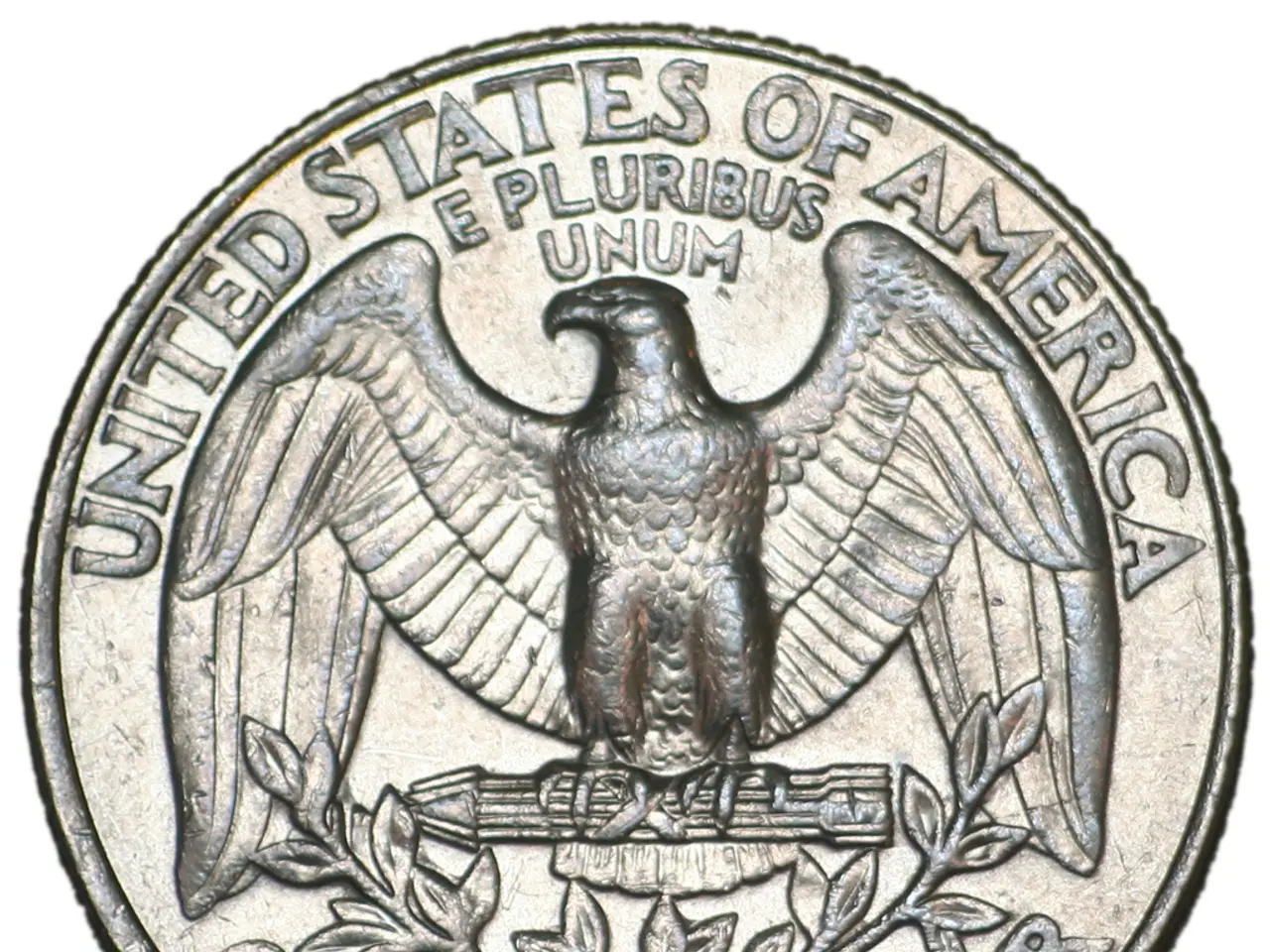U.S. currency's value increasing steadily
The Kazakhstani Tenge (KZT) is expected to experience a moderate depreciation against the US Dollar (USD) in the summer of 2025, according to recent forecasts. This trend is influenced by a combination of domestic factors and regional economic conditions.
Currently, the National Bank of Kazakhstan has maintained its base rate at 16.5% to combat rising inflation, which reached 11.3% in May 2025. Despite a projected 5% GDP growth for 2025, inflationary pressures and other factors are contributing to the weakening of the tenge.
In the summer of 2025, the dollar rate is anticipated to hover in the 450–470 KZT per USD range. This forecast is based on the observed trends in the first half of the year, where the average rate started at around 463 KZT per USD in April, declined slightly to 453 KZT per USD in May, and rebounded slightly in June to average 459 KZT per USD.
Looking further ahead, by October 2025, the exchange rate is projected to be around 471 KZT per USD. November and December are expected to show minor fluctuations, with the rate ranging between 466-476 KZT per USD, suggesting a continued mild depreciation trend.
Experts from the Eurasian Fund for Stabilization and Development (EFSD) predict a further weakening of the tenge, with the rate reaching around 560 KZT per USD by 2027, driven by inflation and potential reduced National Fund withdrawals.
As of July 16, the official dollar rate of the National Bank of Kazakhstan stands at 525.87 tenge. The buy rate is set at 526 tenge, and the sell rate is 528 tenge. Exchange offices have not disclosed their average exchange rates for the summer of 2025 at this time.
This outlook underscores the ongoing challenges faced by the Kazakhstani economy and the need for continued vigilance and effective monetary policy to maintain stability.
In the realm of finance and industry, this forecast of a moderate depreciation trend for the Kazakhstani Tenge against the US Dollar in summer 2025 is stirring investor interest in businesses that might thrive under such economic conditions. The National Bank's rate-setting strategies and the EFSD's predictions for further depreciation suggest potential opportunities for investing and navigating the domestic market wisely.




